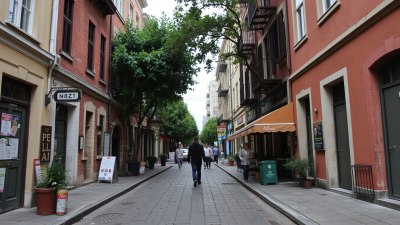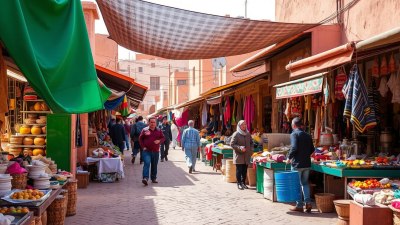Streets With Stories No Guide Will Tell
Discover hidden stories behind urban streets that guidebooks overlook.

Urban landscapes are often defined by their iconic landmarks, bustling squares, and renowned museums. However, the true essence of a city often lies within its streets—those less trodden paths that are filled with untold stories and rich histories. Streets with stories are where the heartbeat of a city can be felt, revealing the cultures and narratives that shape its character. Join us as we explore some of these enchanting streets, uncovering the tales that only the locals know.
The Allure of Hidden Narratives
Every city has its charm, and often that charm does not lie in the spotlight. Hidden narratives can be found in the alleyways and side streets. These places have seen laughter, struggle, joy, and sorrow, often without ever being recorded in history books. As we delve into the stories of various lesser-known streets, we will find that they each contribute to the grand mosaic of urban life.
Take, for example, a tucked-away street in the heart of a bustling metropolis, often overlooked by visitors. This particular street, adorned with vibrant murals and graffiti, tells the story of a community of artists who transformed their environment. The walls once draped in dull beige are now canvases that narrate tales of resilience, love, and social issues. Local artists congregate here, sharing their creativity and asserting their identity through art. Each mural is meticulously crafted, often sparking dialogues and igniting movements. As you walk down this street, you can almost hear the artists whispering their thoughts through their strokes, pushing back against the gloss of commercialism.
Then there’s the narrow lane known for its historical significance, a once-thriving location during a pivotal moment in the city's history. This street played a crucial role in the civil rights movement, where activists gathered to brainstorm ideas and forge plans for protests. Today, it stands as a reminder of the struggles faced by many, adorned with plaques detailing its historical importance. Walking down this lane, you can almost feel the passion and determination that once echoed off the walls, echoing the calls for justice and equality that defined an era.
Every street carries the language and dialect of its inhabitants. The street vendors along a particular avenue might speak in a mix of languages that harken back to the roots of immigrants who settled there. This place cooks up a blend of culinary delights, showcasing traditional dishes from various cultures. Each vendor has a story—the grandmother who taught her granddaughter to make dumplings, the family recipe passed down through generations, and the cultural celebrations that draw the community together. The diversity of flavors and stories creates a vibrant tapestry that reflects the resilience and strength of a multicultural backdrop.
Some streets are enchanting due to their historical architecture, each brick narrating stories from centuries back. Imagine a street lined with Victorian buildings, each with its own unique charm. There are whispers of the past embedded in the very structure of the buildings. A charming little café at the end of the street, now a hub of creativity and conversation, used to be the meeting point for revolutionary thinkers and artists. Over a cup of coffee, patrons often share the legends of those who walked before them, adding to the street’s lore and ensuring that the past remains alive.
Then there are streets steeped in myths and local legends. Folklore often defines a community, and certain streets may be said to be haunted or have witnessed mysterious events. One such street is known for its eerie quietness at night, with stories of ghostly figures seen wandering. Locals recount tales of past tragedies and lost loves, weaving endearing stories that bring life to the darkness. As the moonlight spills onto the cobblestones, the air thickens with tales of yesteryears, casting a spell that makes the mundane feel magical.
Another street chronicles the economic evolution of a neighborhood. Once a bustling market street, changing times have transformed its character. As industries shifted, this street underwent a renaissance, giving rise to artisanal shops and boutiques. The buildings, once filled with factories, are now havens for creativity. Each shop has a story of its owners, echoing a narrative of adaptation and innovation. This shift fuels local pride and inspires new generations to harness their entrepreneurial spirits, while still respecting the street’s roots.
The social dynamics of a street can also unveil profound stories. In a city known for its divisiveness, there lies a street where communities come together. Every weekend, it transforms into a vibrant marketplace, hosting cultural festivals that celebrate diversity, unity, and acceptance. Here, people from all walks of life intermingle, sharing food, music, and laughter. The very fabric of this community is intertwined, showcasing that despite differences, the love for one’s heritage can unite. Walking down this street during a festival, you can feel the bonds formed over shared experiences, truly reflective of humanity itself.
Some streets are also noteworthy for their ecological significance. Envision a street with flourishing trees that form a green canopy above. This street tells the story of a community’s dedication to sustainability and environmental consciousness. Local initiatives have led to urban gardens, green roofs, and wildlife habitats placed strategically throughout this pathway, leading to a symbiotic relationship between the city and nature. As you stroll, you can observe the activity of bees, the rustle of leaves, and the laughter of children playing in the gardens, demonstrating that urban spaces can very well coexist with nature.
Finally, the heartbeat of a community can often be found in its streets, where everyday life unfolds. The rhythm of the street tells you when to rise and when to rest. Street musicians play at dawn, while vendors set up stalls, infusing the air with delightful aromas of breakfast being prepared. People jog, walk their dogs, and children play; on weekends, families gather for picnics in nearby parks. This sense of normalcy and everyday joy shared by the locals forms the backbone of what a street represents as more than just a path—it becomes an evolving narrative filled with resilience, hope, and love.
As cities continue to modernize, the importance of preserving these streets with stories becomes even more critical. Urban development can often threaten these hidden gems, overshadowing their significance. It’s essential for cities to create initiatives that recognize and celebrate the stories encapsulated in these streets while balancing progress with preservation. By doing so, future generations can experience the richness of their cultural heritage and continue to share these narratives with one another. Ultimately, maintaining these stories is crucial for the identity of a city, ensuring its history and culture are not lost.
As travelers and locals alike, we must encourage exploration beyond the well-trodden paths. Curiosity leads to discovery, and sometimes a simple stroll down a lesser-known street can uncover a treasure trove of stories waiting to be shared. Engaging with the locals who inhabit these streets can reveal a depth of experience and wisdom that guidebooks often miss. By embracing the stories, we enrich our travels and foster a deeper connection to the places we visit.
In conclusion, streets with stories no guide will tell offer valuable insights into the cultural, historical, and social fabric that shapes our cities. They remind us that every sidewalk has a tale to tell, and each corner can lead us to extraordinary narratives if we take a moment to listen and immerse ourselves in the surroundings. So next time you venture into a new city, let your feet lead you off the beaten path, and you may just stumble upon a story that transforms your perception of that place.











